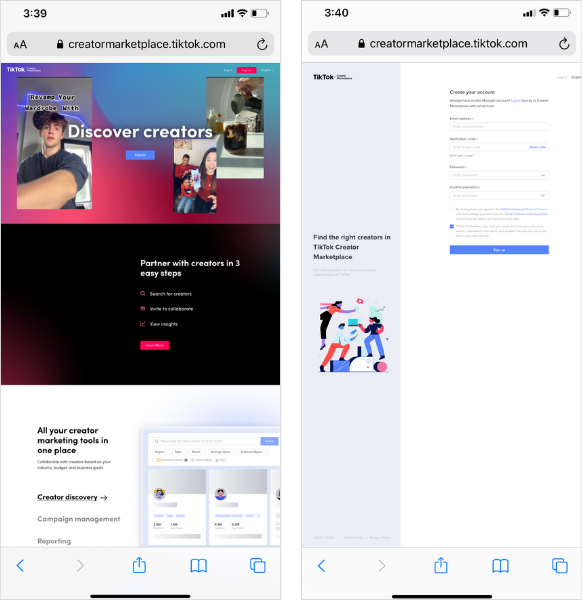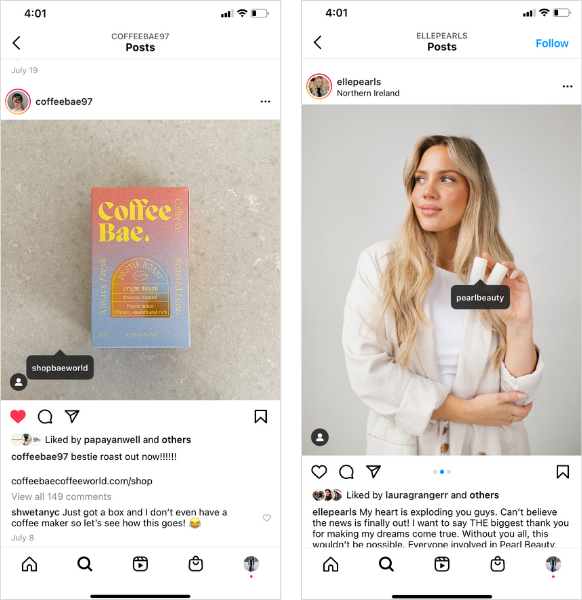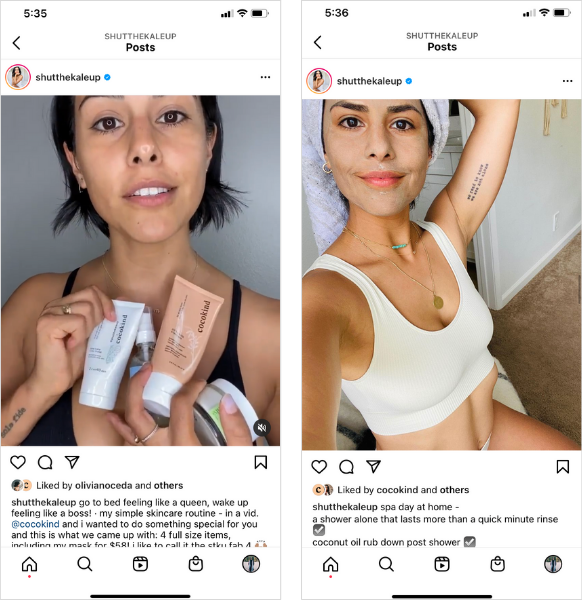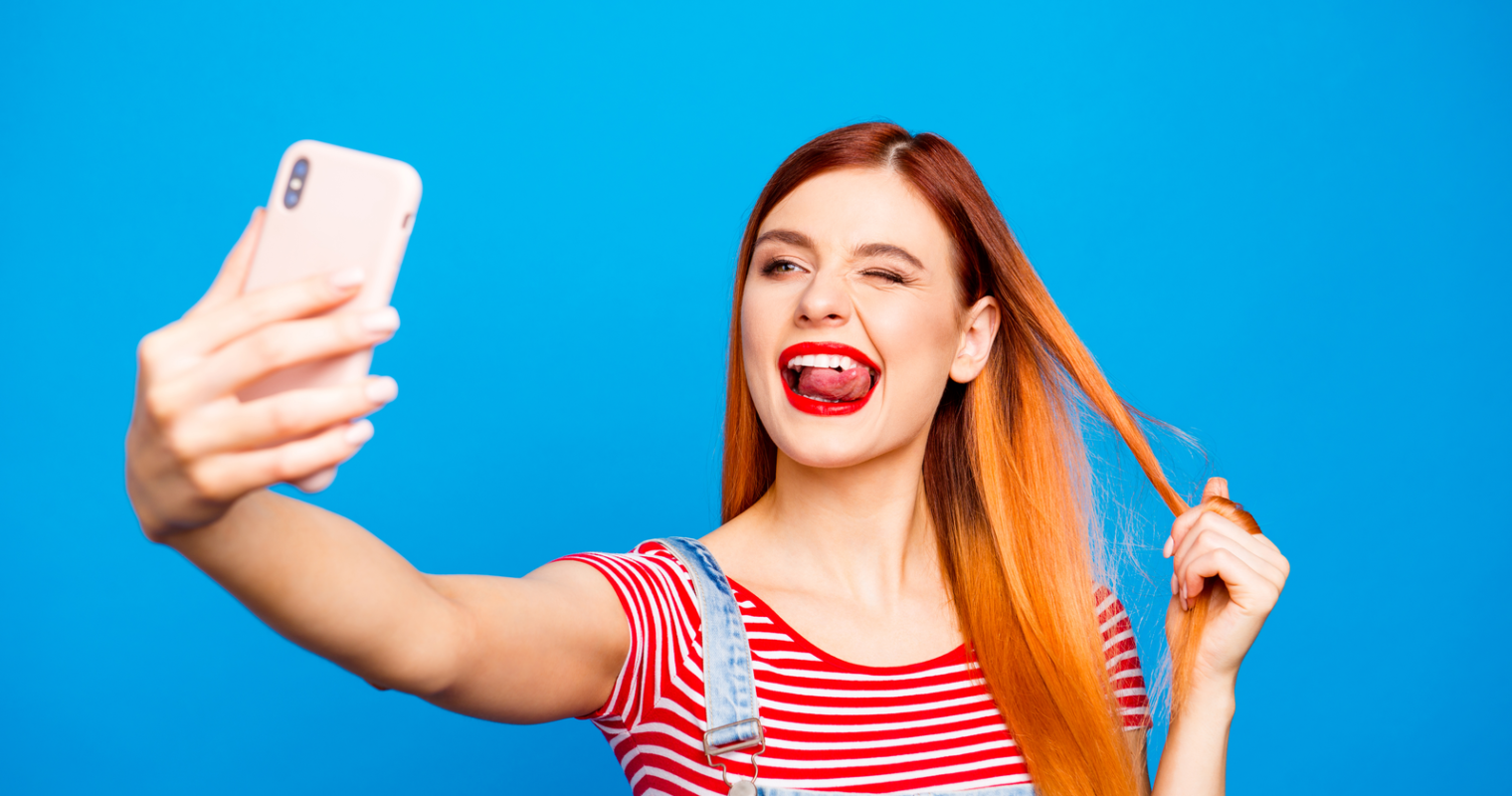If you are planning for your next influencer campaigns on social media, it’s necessary to take a look at the latest industry and influencer marketing trends.
How is Instagram supporting creators on the platform? Why should you work with Instagram Micro-influencers? Should we spend time and money on video content?
Here, we will show you the top influencer marketing trends that you should follow in 2022.
Influencer Marketing Trends to Follow in 2022
1. Creator-focused Marketplaces
When TikTok launched its Creator Marketplace, it became a simple method for brands and creators to collaborate on campaigns.

And of course, Instagram wasn’t too far behind.
Instagram realized the necessity of having more creator tools. So, Instagram is launching a suite of new tools that will support creators and brands to connect and work on Instagram through brand partnerships, commerce, and more.
Both Instagram and TikTok release new functions and tools in their creator marketplaces that help streamline how brands and influencers communicate. Such great news!
With the rapid growth of Instagram, we predict a shift in the influencer marketing agency space.
Could reliance on agencies decrease if everything from discoverability to collaboration can be done all in only one app?
While that remains to be seen, this is a great influencer marketing trend to follow.
2. The Rise of Nano & Micro-Influencers
Nano and Micro-influencers have massive niche communities brands can tap into, making their product suggestions seem like they’re coming from the best friend or trusted confidante.
And while they may not have many followings, Nano and Micro influencers still have a strong social presence, with up to 100K people following them.
This is a hard truth: the Later x Fohr Influencer Marketing Report showed that the fewer Instagram followers an influencer has, the higher their average engagement rate.
3. A Shift to Video Content Partnerships
With the significant growth of TikTok and Instagram Reels, vertical video is on the top of the list content format for influencer marketing.
In other words, video content will shine in 2022.
Social media strategist Christina Galbato says that she is going to include more videos in her strategy.

She also recommends “focusing on your niche and creating relevant video content on Instagram Stories and Reels – it’s a great method to engage your community on a higher level and provide a ton of value.”
TIP: You can use the Instagram Collabs feature to collaborate with an influencer on a Reel or Instagram video.
4. Influencers Turned Business Owners
One trend we may see more and more in the influencer marketing industry is the creation of full-fledged entrepreneurs.
While being an influencer is its full-time job, we’re talking about the creators who’ve turned their influence into their businesses.
From @coffeebae97 who now sells her coffee to Elanna McGowan who recently introduced a beauty brand, influencers are becoming entrepreneurs too:

What does this mean for brands?
It opens up new doors for partnerships. If you don’t have a plan for your next campaign, think about partnering with the influencer’s account and their brand account for a giveaway or collaboration.
Being able to leverage their new business – when it makes sense – can be mutually beneficial for you both.
5. Authenticity Over Perfection
Authenticity on social media is one of the most effective methods to build a digital community. And it’s become a growing influencer marketing trend too.
Creators are shifting away from the perfectly curated feed aesthetic and choosing to share less filtered and more in-the-moment photos of their daily lives.
Take Emily Mariko whose videos frequently get tons of views:

Nichole Ciotti, the co-founder of the design app, Storyluxe, thinks this trend will continue evolving: “After some time has passed, people are finding their true voices on social.”
So what does this affect brands?
Partner with influencers who can create sponsored content that doesn’t look like ads.
In other words: don’t worry too much about finding influencers who have the “stunning” aesthetic.
Instead, focus on the creators who have real and strong relationships with their community and offer valuable authentic content.
6. A Renewed Focus on Diversity & Inclusion
The increase in social activism in 2020 spotlighted a lack of diversity in this niche.
With many brands called out for tokenism and unfair pay, many creators were complaining about the need for more representation in influencer marketing.
As an entrepreneur and content, creator Sashagai Ruddock shared, “Representation matters because it inspires and can change the way people see themselves, and how they see your brand.”
While we realize that diversity and inclusion should not be a “trend”, we predict (and hope) they become more of the standard moving forward.
And it’ll take more than simply working with multiple influencers – your internal company culture matters too.
As PRZM co-founder, Larry Milstein, says: “It’s not enough to cast diversity and inclusion. It needs to be built into the fabric of the brand.”
7. More Ongoing Partnerships & Collaborations
This trend has already popped up on our feed, and we predict it’ll continue in 2022!
Rather than a one-off post or video, influencers will be finding partners with brands on a more ongoing basis.
Take Jeannette Ogden, whose love for skincare brand, Cocokind, is apparent throughout her sponsored content – making the partnership feel more authentic:

They then took it a step further by collaborating on a product together, which generated tons of excitement when it dropped in Target:
Investing in a long-term relationship is a win-win for both parties. Not only does it build trust with the influencer’s community, but it adds a level of legitimacy. Plus, it’ll drive sales!
8. Conversations About UGC & Crediting
According to Forbes, over 86% of companies use user-generated content (UGC) as part of their marketing strategy.
And for good reason.
UGC is typically seen as more trustworthy than branded advertising. It can help build the credibility of your product and is great for building a feed full of beautiful content.
That said, the legality around reposting UGC remains a gray area. And we predict we’ll see a shift in the conversation in 2022.
“We’ve had some creators ask us to credit them within the first two lines of our caption, rather than at the end,” says Christine Colling, Later’s Social Content Lead.
“It’s a growing trend and speaks to the shifting nature of content creation and the creator space. People want to make sure their work is credited above the fold on Instagram. And in some cases, they want to be compensated too,” explains Christine.
We’ll keep an eye on whether this trend takes off, but remember to always ask for permission before reposting a photo, tag the creator, and credit them in the caption (whether it’s at the beginning of the end).
There’s no doubt we can expect to see new, creative influencer marketing trends in the industry for years to come. Watch this space!

